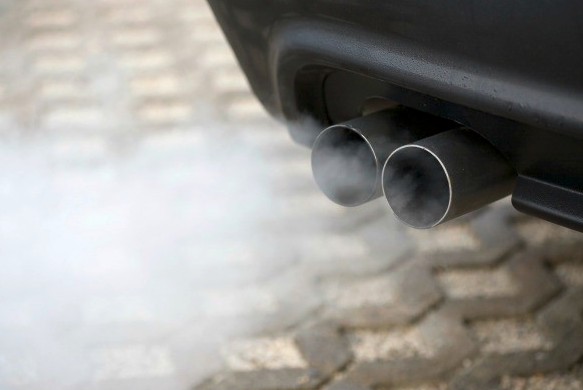

When most people hear the words “exhaust system,” they think of the muffler and tailpipe. There is a lot more to the exhaust system than you may realize. These two parts are actually components in an important engine system designed to protect you and your passengers from exposure to harmful exhaust gases. In this blog post, you will learn about the exhaust system and how to tell if you need exhaust system repair. You’ll also learn about exhaust system maintenance.
For your engine to run properly and efficiently, the proper amount air and fuel needs to be ignited at the right time causing mini explosions. Each time the air/fuel mixture explodes noxious gases are created that have to pass out of the engine and to the environment through the exhaust system. As they pass through the exhaust system, the sound of the explosions is dampened so your vehicle runs quietly. The harmful gases are also converted into water vapor and gases that are less harmful.
Any number of things can affect its performance and cause the need for exhaust system repair – bad spark plugs, a faulty oxygen sensor, etc. Also, if any part of the exhaust system is faulty, you are at risk of being exposed to dangerous gases (e.g. carbon monoxide). You and your passengers may begin to feel sick. If the level of noxious gases entering the cabin of the vehicle is high enough, you may even fall unconscious. This is the main reason one should never delay having a exhaust system repair completed.
What parts make up the exhaust system?
The exhaust system has five main parts. They are:
- Exhaust Manifold – The exhaust manifold is connected at the cylinder head. It collects the gases created during combustion and delivers them to the exhaust pipe.
- Oxygen Sensor – The oxygen sensor is continually measuring the amount of oxygen in the exhaust. The data it collects is sent to the onboard computer which adjusts the ratio of fuel to air.
- Exhaust Pipes – They begin at the exhaust manifold and send gases through the system where they exit at the tailpipe.
- Catalytic Converter – Just like its name implies, this part “converts” the harmful gases into water vapor and less harmful gases. Since it contains precious metals, it is also expensive to replace.
- Muffler – This part dampens the sound of the explosions that are going on in the engine so you have a quiet ride.
Are you noticing any of these signs that there’s a problem with the exhaust system?
- Smelling exhaust fumes while driving – This is not something to ignore as it is quite dangerous to you and your passengers. The reason you are smelling the exhaust is because there is a leak in the system that is entering the cabin.
- Hearing hissing, popping or loud rumbling noises – If your vehicle starts to sound louder and louder with hissing, popping or loud noises coming from underneath, most likely you will need to replace the muffler.
- Noticing less gas mileage – This could mean the oxygen sensor needs to be replaced.
The “Check Engine Light” and the Exhaust System
The Check Engine or the Service Engine Soon light alerts you when there is a problem with your vehicle’s emissions system. If the light comes on and stays on, you should have your vehicle checked and fixed as soon as possible. By delaying Check Engine light repairs, you could end up having to replace more expensive parts, like the catalytic converter. Also, you won’t be able to pass an emissions inspection with the light on.
Maintaining the Exhaust System
Since it’s located underneath your vehicle, there’s not really much you can do to maintain the exhaust system. You can, however, make sure you wash the underside of your vehicle at least once a month, especially in the winter. That’s because the salts on the roads will end up causing rust and corrosion. Also, have the exhaust system inspected and fix minor problems before they become costly repairs.
Let Colonial Service Station in Staten Island, New York, assist you with the maintenance and repairs on your exhaust system. When you bring your car, van or truck in for periodic service, we complete a courtesy inspection. If we see a problem with the exhaust system, we’ll let you know so you can take care of it. If you’re having a problem with the exhaust system, click here to schedule an appointment for exhaust system repair.
